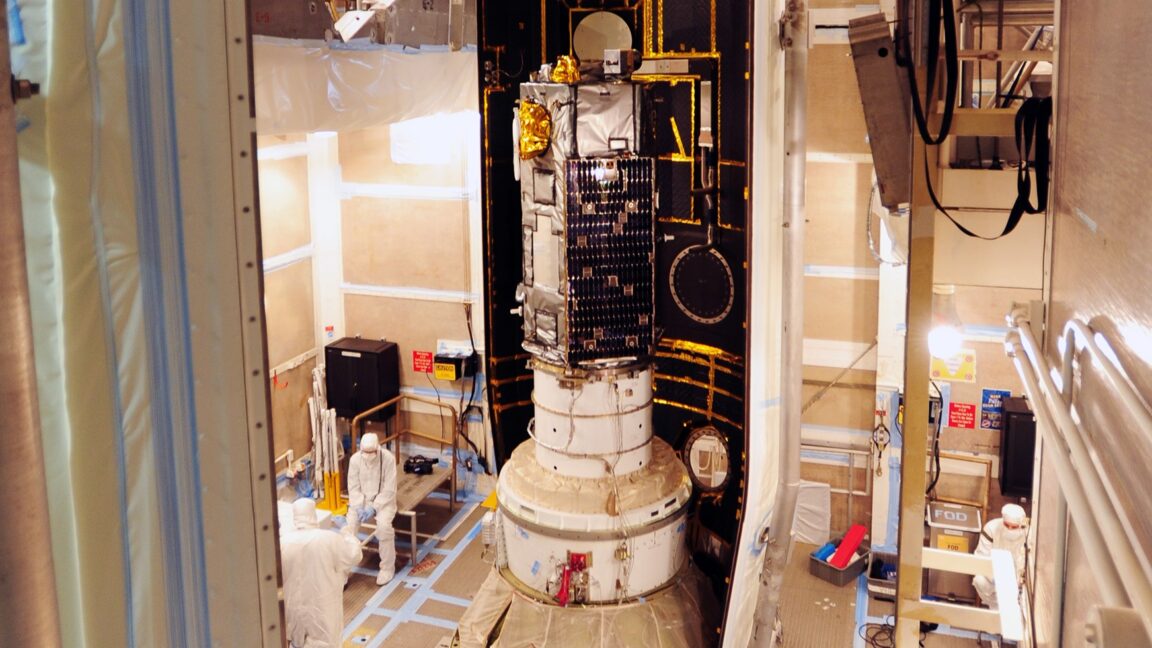Science
GOP Moves to Cut NASA’s Climate Satellites Amid Budget Overhaul

The future of NASA’s climate monitoring capabilities hangs in the balance as Republican lawmakers push for budget cuts that could terminate two critical satellites designed to track carbon dioxide emissions. President Donald Trump‘s recent budget request proposes eliminating funding for 41 of NASA’s 124 science missions, which includes zeroing out funding for another 17 missions. This budget plan represents a significant reduction, slashing NASA’s overall budget by 25 percent and halving its science funding.
The implications are profound as the current federal budget is set to expire on September 30, 2023. While bipartisan support among lawmakers indicates that many of Trump’s proposed cuts may be rejected, the uncertainty surrounding the budget process leaves NASA officials in a precarious position. Without clear directives from Congress, the White House may proceed with its plans to cancel these missions.
Two of the missions at risk, the Orbiting Carbon Observatory-2 (OCO-2) and Orbiting Carbon Observatory-3 (OCO-3), were developed to monitor atmospheric carbon dioxide levels. The U.S. taxpayers invested more than $750 million in their design, construction, and launch. Terminating these missions could save approximately $16 million annually, but critics argue that such a move would undermine significant environmental research.
David Crisp, a former leading atmospheric scientist at NASA’s Jet Propulsion Laboratory, expressed his concerns in a recent interview with The New York Times. He likened the decision to terminate these missions to purchasing a vehicle only to crash it to save on fuel costs. Crisp emphasized that these satellites serve essential functions in commerce, national security, and environmental monitoring.
The inception of the OCO missions dates back to 2002 when NASA chose Crisp’s proposal from a list of 18 concepts. After its initial launch in February 2009 failed due to a technical malfunction, a replacement mission, OCO-2, was approved and successfully launched in 2014. OCO-2 has since provided invaluable data on carbon dioxide emissions, helping to distinguish between natural and anthropogenic sources.
OCO-3, launched in 2019 aboard a SpaceX Dragon capsule, expanded the mission’s capabilities by monitoring urban carbon emissions and tracking daily atmospheric changes. Both satellites have been instrumental in refining the understanding of carbon emissions and their impact on the climate.
Recent studies leveraging data from OCO-2 and OCO-3 have highlighted their effectiveness in pinpointing emissions from various sources, including power plants in Europe and North America. These findings underscore the importance of continuous atmospheric monitoring to inform policy decisions and environmental strategies.
As NASA faces potential mission cancellations, researchers around the globe are developing their own greenhouse gas-monitoring satellites. Countries such as Japan, China, and members of the European Union have initiated projects, but none currently match the precision of NASA’s OCO instruments. The new European mission, CO2M, is expected to launch in 2027, but it will not provide immediate support to replace the data lost if the OCO missions are shut down.
Local leaders, such as Mark Elrich, the Democratic county executive of Montgomery County, Maryland, have voiced their concerns regarding the potential termination of NASA’s carbon-monitoring missions. Elrich noted that the loss of these satellites would significantly weaken efforts to hold polluters accountable and hinder research that is critical to understanding climate change.
As the budget negotiations unfold, the fate of NASA’s carbon monitoring capabilities remains uncertain, raising questions about the future of climate research and policy in the United States. The upcoming weeks will be crucial in determining whether these vital missions will continue to operate or face an abrupt end.
-

 Science3 months ago
Science3 months agoToyoake City Proposes Daily Two-Hour Smartphone Use Limit
-

 Top Stories3 months ago
Top Stories3 months agoPedestrian Fatally Injured in Esquimalt Collision on August 14
-

 Health3 months ago
Health3 months agoB.C. Review Reveals Urgent Need for Rare-Disease Drug Reforms
-

 Technology3 months ago
Technology3 months agoDark Adventure Game “Bye Sweet Carole” Set for October Release
-

 World3 months ago
World3 months agoJimmy Lai’s Defense Challenges Charges Under National Security Law
-

 Lifestyle3 months ago
Lifestyle3 months agoVictoria’s Pop-Up Shop Shines Light on B.C.’s Wolf Cull
-

 Technology3 months ago
Technology3 months agoKonami Revives Iconic Metal Gear Solid Delta Ahead of Release
-

 Technology3 months ago
Technology3 months agoApple Expands Self-Service Repair Program to Canada
-

 Technology3 months ago
Technology3 months agoSnapmaker U1 Color 3D Printer Redefines Speed and Sustainability
-

 Technology3 months ago
Technology3 months agoAION Folding Knife: Redefining EDC Design with Premium Materials
-

 Business3 months ago
Business3 months agoGordon Murray Automotive Unveils S1 LM and Le Mans GTR at Monterey
-

 Technology3 months ago
Technology3 months agoSolve Today’s Wordle Challenge: Hints and Answer for August 19









